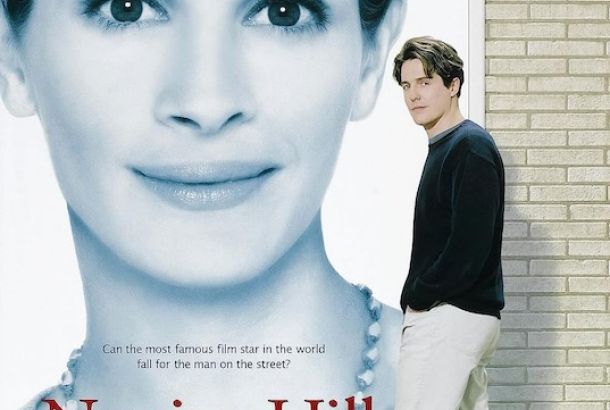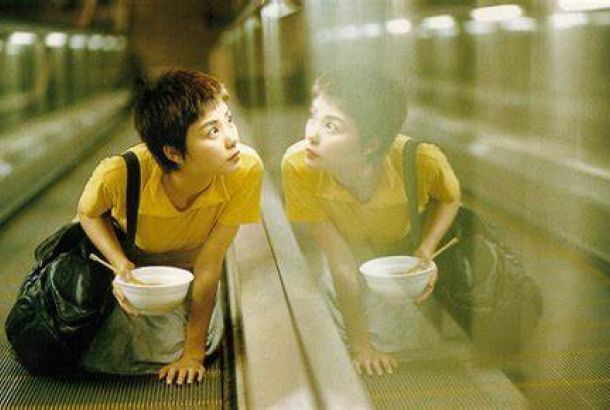Feature: A Bigger Splash
Life imitates art imitates life imitates art in A Bigger Splash (2015). Whilst A Bigger Splash is, in fact, a – very faithful – remake of Jaques Deray’s La Piscine (1969), it feels as though the director, Luca Guadagnino took more inspiration from David Hockney’s 1968 painting of the same name.
Like with Hockney’s paintings, A Bigger Splash feels isolated. This is no accident, as one of the major themes of the film is escapism. Marianne Lane (Tilda Swinton), a rock-star who has lost her voice, and her lover Paul (Matthias Schoenaerts), a documentary filmmaker and recovering alcoholic, are both retreating from the world. Together they shut out the chaos of reality and create their own idyllic universe in the remote Italian island of Pantelleria.
The opening shot of metal piping, harsh and cold, panning down to an obviously emotionally and physically drained Marianne, dressed in a sequinned catsuit walking backstage alone towards her audience – a filled out stadium chanting her name – feels impersonal. Compare this to the scene following immediately after: Marianne and Paul, nude and sunbathing beside their pool. Birds and cicadas can be heard in the background. Red flowers and green trees frame the pool. In two shots, Guadagnino tells us all we need to know; their lives before their escape were cold, and despite the crowds of adoring fans cheering, impersonal, and lonely.
When they are in each others company, and away from the too loud, too busy, too demanding world, they are content and the bright, sunny colour palette of the film highlights this. That Guadagnino was inspired by Hockney is evident not only because they share the same name, but in the fact that the Italian villa and swimming pool that become the central hub of tension and action within the film are strikingly similar to the Los Angeles home depicted in Hockney’s own painting. Indeed, many of the film’s locations look as though they were inspired by the artist’s uniquely pared down, minimalist style. The meandering shots at the beginning of the film of tucked away, sun-bleached, white houses and gloriously blue pools and lagoons that usually only have a single occupant at any given time are incredibly reminiscent of Hockney’s paintings of LA poolsides and beaches.
Hockney once said that in LA, “the climate is sunny, the people are less tense… When I arrived I had no idea if there was any kind of artistic life there and that was the least of my worries.” And the same rings true for Marianne and Paul in Pantelleria. One gets the impression that even if Marianne’s voice returned, she wouldn’t want to go back to her old world of noise and discord, and that is where the tension lies. Unlike a painting, where one moment is suspended forever, and the quiet can stretch until the canvas crumbles, life in A Bigger Splash has to continue, and the arrival of Harry (Ralph Fiennes), Marianne’s former lover and his broodingly sultry daughter, Penelope (Dakota Johnson).
It isn’t only the colour palate that alludes to Hockney’s work. The feeling of solitude seeps through Hockney’s paintings, which predominantly feature vibrant, gorgeous landscapes devoid of people, people, when they do feature in his work are rarely the focus: they’re often seen from a distance, or their presence is merely hinted at. Whilst A Bigger Splash is a film about relationships, both the good and the bad, the easy and the complicated, Guadagnino and Yorick Le Saux, the head cinematographer, always focus on the space between the characters. How each character feels towards each other is shown in the distance between them.
This use of space and the environment of the home is brilliant in its simplicity, allowing for so much more to be said outside of dialogue. The relationship that both the film and Hockney’s paintings have with negative space is shown in two different scenes with Penelope and Marianne and Paul. In both, she is the only one in the pool, surrounded by water. She is unreachable. In the scene with Marianne, Penelope makes no effort to breach this gap, and so the water acts a metaphor for their lack of understanding and lack of desire to understand each other, yet in the scene with Paul, she swims to the edge of the pool, a challenge for him to join her. It is a seduction.
With Harry and Penelope, the outside world creeps in. Harry brings with him a vitality and energy that turns the idyllic – if somewhat sleepy – dreamworld Marianne and Paul have created for themselves into a riot of colour and action. Though Guadagnino is careful never to change the colour palate, the change of tone and Fiennes’ spectacular performance as the manic, passive-aggressive and jealous, but also seductively charming Harry, the bucolic backdrop becomes somehow frantic and aggressive.
Hockney’s influence shines throughout this film, from the colour imagery to the execution of the camera angles and cinematography. The themes of escapism and isolation intertwine heavily in both Hockney’s work and Guadagnino’s expertly crafted film, creating a film that feels like it could perhaps be hanging in a gallery.







